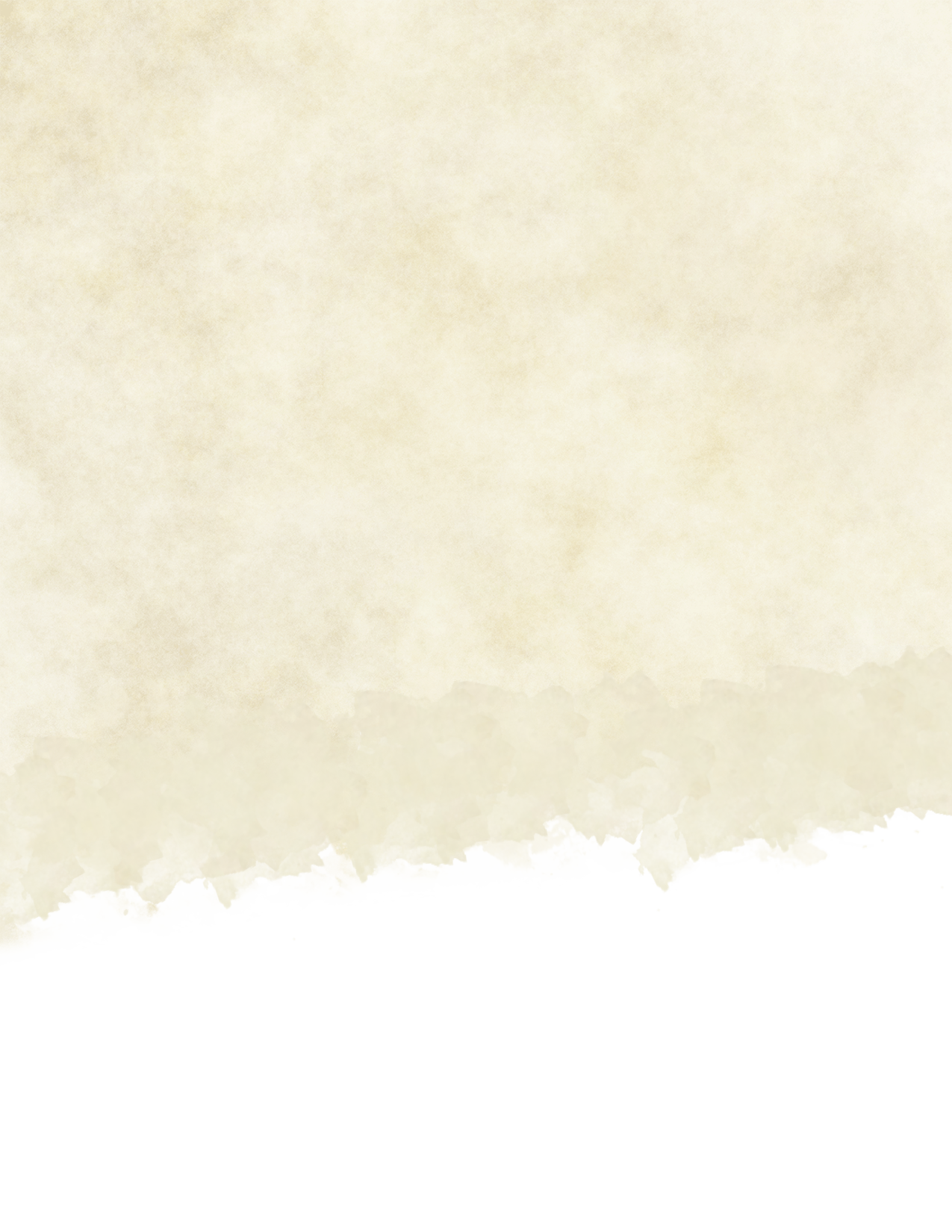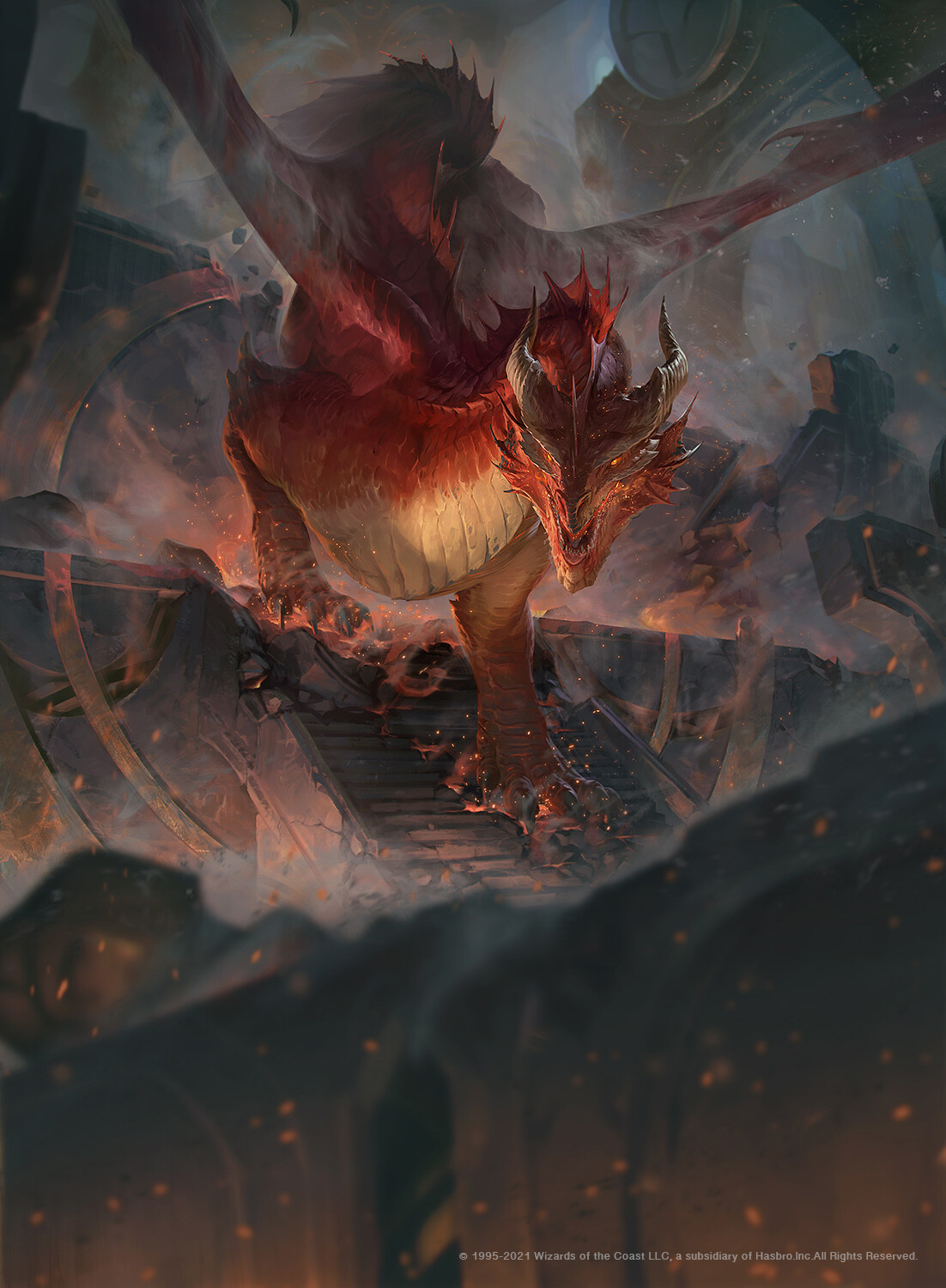

The Change :
1. Hit Points Pools
The hit points maximum of the Legendary Creature is equally divided in a number of hit points pools equal to twice its number of legendary resistances, each pool gathering a same amount of hit points (rounded up if necessary).
When the creature takes damage, it reduces these pools one after the other.
2. Legendary Resistances
At the start of its turn, the number of Legendary Resistances of a creature returns back to its maximum.
The maximum number of Legendary Resistances of a creature is reduced by 1 for each of its empty HP pools and by 1 for each of its levels of Dimming.
(See below for what is the Dimming condition).
A creature can expend a Legendary Resistance every time it should suffer an effect other than damage (like a Condition, a forced movement, a banishment etc.). When it does so, the effect is replaced by a level of Dimming.
Art Credit : Wizards of the Coast
Exemple :
An ancient red dragon has 546 hit points maximum and 3 Legendary Resistances according to its stat block. So its HP pools should look like this :


=> Here, the maximum number of Legendary Resistances of the dragon is 1
(It was 3 initially, minus 1 because one pool is at 0 hit points, and minus 1 because it has one level of Dimming).
3. The Dimming Condition
Like for Exhaustion, a creature can have multiple levels of Dimming. For each level, it gets :
- One of its fullest HP pool blocked.
- Its maximum number of Legendary resistances reduced by 1.
Remark :
When a Legendary Creature replaces an effect by a level of Dimming :
- That level of Dimming affects the creature for the same duration the other effect should have last (so if the effect was instantaneous, like a forced movement, the level of dimming instantaneously ends).


4. How to Win the Battle
You can win either by :
- Reducing to 0 all the HP pools that are not blocked by a Dimming level.
- Or by reducing the number of Legendary Resistances to 0 and then landing a battle ending spell such as Banishment or True Polymorph for instance.


- And if the spell, feature or item would allow its target to repeat a saving throw to end its effects, the Legendary Creature can make that same saving throw to try to loose one of its levels of Dimming instead.
5. Conclusion
This new way of ruling boss fights allows both martials and casters to really collaborate on a same objective.
The martials can help the casters to place a decisive spell on the Legendary creature by breaking its Legendary Resistances thanks to the damage they deal, and casters can help the martials to kill the boss more easily by removing Legendary Resistances thanks to their control spells (so martials have less hit points pools to reduce to 0 to kill the monster).
So both sides now really feel like they are contributing to a same cooperative effort, which is a lot more fun for everyone!
6. To go further...
As now Legendary Creatures have multiple pools of Hit Points linked to their Legendary resistances, you can use their maximum number of Legendary Resistances to divide the encounter into multiple phases (yeah, I know, it is very video gamey, but it makes the fight so much more dynamic and memorable) !
For instance, you can give the creature new Legendary actions that it can use only if it has a certain number of Legendary Resistances left.
Example :
You could add the following Legendary Actions to the Ancient Red Dragon :
- Deadly Grasp (Only if the dragon's maximum number of Legendary Resistances is 2, cost 2 actions). The dragon flies 40 feet and can make a special grapple attack at any time during that movement.
- Bolt of Fire (Only if the dragon's maximum number of Legendary Resistances is 1). Range Weapon Attack : +14 to hit, range 150 ft., one target. Hit : 16 (2d10 + 5) fire damage.
With those new Legendary Actions, the dragon can now adopt different strategies during the fight :
- At 3 LR : The dragon starts the fight by breathing fire and mauling the weakest characters with its claws and its tail.
- At 2 LR : The dragon now tries to grapple one enemy to take it into the airs, away from the rest of its group. there, the dragon can bite its target more easily, and eventually let it fall to its death.
- At 1 LR : It now avoids the melee at all cost, staying in the airs and breathing Fire Bolts from a safe distance.
- At 0 LR : Finally, as it is now seriously wounded, the dragon either tries to flee, or rushes on the survivors to finish them in a last frenzy.
An other option could be to add lair actions that happen when the creature's maximum number of Legendary Resistances is reduced.
Example :
1d4 + 1 Red Dragon Wyrmlings join the fight the first time the maximum number of Legendary Resistances of the dragon becomes 2, the first time it becomes 1 and the first time it becomes 0*.
Or
When the dragon's maximum number of Legendary Resistances becomes 2 for the first time, the lava in the cave starts rising. At the end of each of its turns until the dragon dies, the lava rises 5 feet.
Art Credit : Wizards of the Coast


Frequently Asked Questions
1. If the Creature uses a Legendary Resistance against a spell effect, does it still takes the damage from that spell?
Yes, the Dimming condition only replaces negative effects that are not damage, like conditions or forced movement for instance. The creature still takes the damage as normal.
2. What happens if the creature uses a Legendary Resistance on a spell or feature that has multiple negative effects, like one that both pushes and slows?
The Dimming effect then replaces one lasting effect (of the legendary creature's choice), alongside all instantaneous effects imposed by that spell or feature (such as imposed movements or shove prone effects for instance).
3. What happens to the blocked HP pool when the Dimming level that blocked it ends?
The HP pool is no longer blocked.
4. What can I do if i find that the boss dies too fast?
You could either increase its maximum hit points (and so the number of hit points of each of its HP pools), or, you could also add that the creature can't lose more than 1 HP pool per turn (so if one of its HP pools reaches 0, it becomes immune to damage until the end of the turn). It should greatly help against nova characters that could potentially kill the boss in one turn.
5. I struggle to track the Hit Points and the levels of Dimming, have you any advice?
Personally, I draw on my paper sheet 1 case for each hp pool. Then, I cover with a die the pools that are blocked by a Dimming level, using dice of different colors or putting them on a special number to remember the duration and/or the character that was the source of the condition.

Homebrew lovingly made by LeRoiDeCarreau
A big THANK YOU to my patreons.
You are the ones that make all of this possible!
The Early Birds :
- VIV_ID
- Ryan Magee
- Ren Carlisle
- LeoHere
- Joseph Lemons
- joel Castaneda
- Brandon Lukacs
- Thomas Philips
- FlameEarth